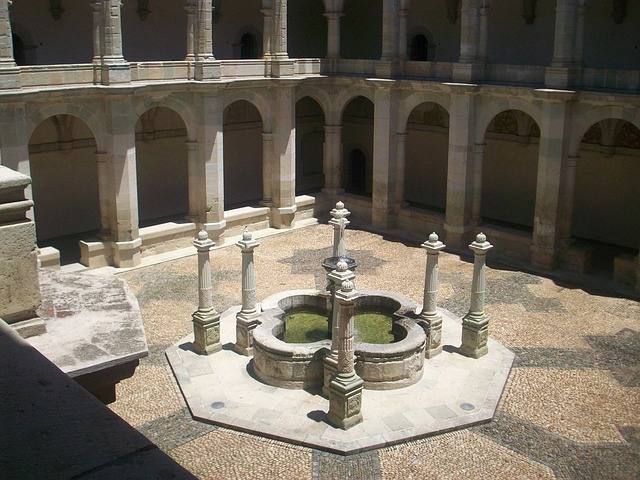The use of concrete structures to protect construction sites
To help develop this article, click 'Edit this article' above.
Contents |
[edit] Introduction
Once widely used in the Roman Empire, concrete has created some of the largest structures still standing today, such as the Pantheon and the Colosseum in Rome and more recently the Hoover Dam on the border between Arizona and Nevada in the USA.
Following the collapse of the Roman Empire, concrete was slowly phased out as a building material until its comeback in the middle of the 18th century. Nowadays it is a staple construction material and is one of the most widely used man-made materials throughout the modern world.
However concrete is not just useful as a building material for large scale projects. Concrete has a wide range of uses and because of its high density it can often be used as a security measure to deter trespassers, prevent people from breaking and entering and more. This makes it incredibly useful for building sites where the project has been briefly delayed for a few weeks or months and security measures need to be put in place to prevent intrusion, vandalism or theft.
We show three examples of concrete structures which can be used to great effect when renovating a building or conducting planned building or demolition works.
[edit] Concrete paving slabs
When working in damp or muddy conditions, thick sludge and mucky earth can hinder construction progress. Concrete paving slabs provide a stable and secure platform upon which construction workers can progress with construction. They are durable, hard wearing and resistant to the elements, making them ideal for long-term construction projects or projects working in the open air. Concrete paving slabs come in a variety of colours and sizes. In some cases it is a good idea to choose a brighter colour as it is easier to spot in harsh weather.
[edit] Concrete security planters
A great and subtle way to increase security is to decorate the exterior of the building with concrete security planters. A concrete basin is placed outside the building that is made of 2/3rds concrete, 1/3rd earth and soil. This can then be planted, giving the illusion that it is only there to provide foliage and a pleasant atmosphere. However the concrete acts as a fantastic security barrier as it prevents vehicles from parking and works as a physical barrier if intruders want to try to force their way in using heavy machinery.
[edit] Concrete barriers
Often the classical method of security is the most popular, and temporary concrete vertical barriers do an excellent job of keeping trespassers out. Their large bulk and variety of sizes prevents vehicles from entering a building site and because of their weight they can easily cordon off sections of the site to prevent access.
It is important to be aware that a construction site may be perfectly secure during the day; however safety and security measures must be put in place when the employees and construction workers sign off for the day, otherwise the building may be target for vandalism or theft. Concrete barriers and security planters deter this so that construction can go ahead as planned.
Featured articles and news
International Electrician Day, 10 June 2025
Celebrating the role of electrical engineers from André-Marie Amperè, today and for the future.
New guide for clients launched at Houses of Parliament
'There has never been a more important time for clients to step up and ...ask the right questions'
The impact of recycled slate tiles
Innovation across the decades.
EPC changes for existing buildings
Changes and their context as the new RdSAP methodology comes into use from 15 June.
Skills England publishes Sector skills needs assessments
Priority areas relating to the built environment highlighted and described in brief.
BSRIA HVAC Market Watch - May 2025 Edition
Heat Pump Market Outlook: Policy, Performance & Refrigerant Trends for 2025–2028.
Committing to EDI in construction with CIOB
Built Environment professional bodies deepen commitment to EDI with two new signatories: CIAT and CICES.
Government Grenfell progress report at a glance
Line by line recomendation overview, with links to more details.
An engaging and lively review of his professional life.
Sustainable heating for listed buildings
A problem that needs to be approached intelligently.
50th Golden anniversary ECA Edmundson apprentice award
Deadline for entries has been extended to Friday 27 June, so don't miss out!
CIAT at the London Festival of Architecture
Designing for Everyone: Breaking Barriers in Inclusive Architecture.
Mixed reactions to apprenticeship and skills reform 2025
A 'welcome shift' for some and a 'backwards step' for others.
Licensing construction in the UK
As the latest report and proposal to licence builders reaches Parliament.
Building Safety Alliance golden thread guidance
Extensive excel checklist of information with guidance document freely accessible.
Fair Payment Code and other payment initiatives
For fair and late payments, need to work together to add value.
Pre-planning delivery programmes and delay penalties
Proposed for housebuilders in government reform: Speeding Up Build Out.
High street health: converting a building for healthcare uses
The benefits of health centres acting as new anchor sites in the high street.


























